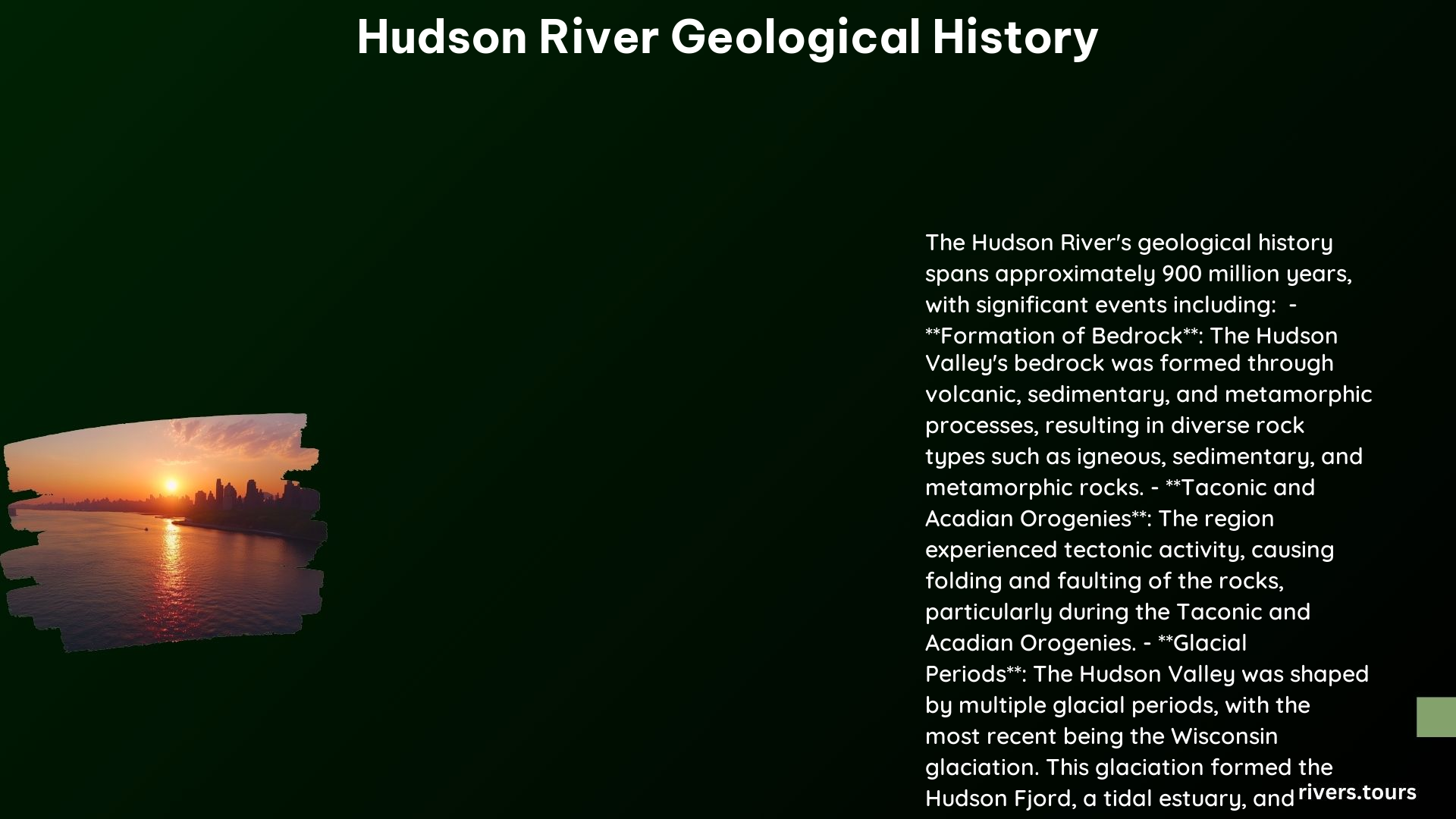The Hudson River Valley has a rich and complex geological history, significantly influenced by the Taconic Orogeny and Acadian Orogeny. These two major mountain-building events shaped the landscape, rock formations, and sedimentation processes in the region.
What is the Taconic Orogeny, and how did it impact the Hudson River Valley?

The Taconic Orogeny was a mountain-building event that occurred from the Cambrian to Late Ordovician periods, approximately 480-440 million years ago. This event formed a massive mountain chain from eastern Canada to the Piedmont region of the eastern United States, including the Taconic Mountains east of the Hudson River.
Key Impacts of the Taconic Orogeny:
-
Mountain Building and Erosion: The Taconic Orogeny created towering mountains that eroded over time, depositing sediment throughout the present-day Appalachians and midcontinental North America.
-
Rock Formations: The Taconic Orogeny led to the formation of metamorphic rocks such as marble, quartzite, phyllite, schist, and gneiss in the Highlands Region.
-
Sedimentation Processes: During the Taconic Orogeny, sedimentary deposits formed on the margins of both the North American continent and within an intervening deep marine basin, which now form the core of the Taconic Mountains.
What is the Acadian Orogeny, and how did it impact the Hudson River Valley?

The Acadian Orogeny was a mountain-building event that occurred from the Early Devonian to Early Mississippian periods, approximately 410-350 million years ago. This event resulted from the collision and accretion of the Avalon Terrane in the northern New England region, affecting much of the entire New York Bight region, including the Hudson Highlands.
Key Impacts of the Acadian Orogeny:
-
Collision and Accretion: The Acadian Orogeny led to the collision and accretion of the Avalon Terrane, which affected the Hudson Highlands region.
-
Rock Formations: The Acadian Orogeny resulted in the formation of the Shawangunk Conglomerate, a massive quartz sandstone and conglomerate formation that rests unconformably on pre-Silurian strata throughout the region.
-
Sedimentation Processes: During the Acadian Orogeny, the depositional environments in the region changed from coarse alluvial sediments to shallow marine fine-grained muds and eventually to clear-water carbonate sediment accumulation with reefs formed from calcareous algae and ancient marine fauna.
How did the Taconic and Acadian Orogenies impact the formation of the Hudson River Valley?
- The Taconic Orogeny created the earliest Taconic Mountains, which towered over western New England and parts of New York State.
- The Acadian Orogeny formed an even taller range of mountains, which eventually eroded to produce vast quantities of quartz sand that hardened into the bedrock of the Catskill Mountains.
- The erosion of these mountains produced a barrier to any potential flow of rivers, leading to the formation of the ancestral Hudson River, which flowed south and eventually carved a canyon through the Hudson Highlands.
What are some examples of geological formations and structures in the Hudson River Valley?
-
Cortland Complex: Formed during the Taconic Orogeny, the Cortland Complex consists of dark gray to black igneous rocks such as pyroxenite, gabbro, diorite, and peridotite.
-
Shawangunk Conglomerate: Formed during the Acadian Orogeny, the Shawangunk Conglomerate is a prominent ridge-forming unit that crops out along the crest of Kittatinny Mountain in New Jersey.
Why is understanding the Taconic and Acadian Orogenies important for the broader geological context of the Hudson River Valley?
- The Taconic and Acadian Orogenies played crucial roles in shaping the Hudson River Valley’s geological framework, influencing the formation of various rock types, sedimentation processes, and the overall landscape.
- Understanding these events is essential for grasping the region’s complex geological history and its relationship to the broader Appalachian mountain-building processes.
